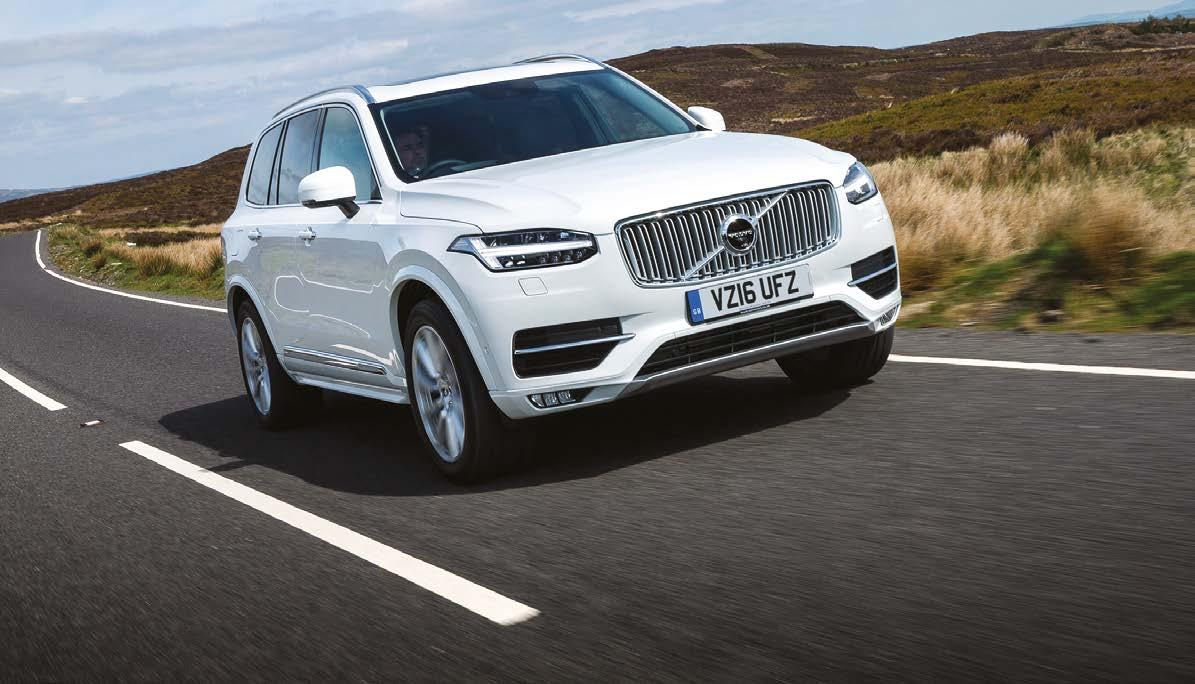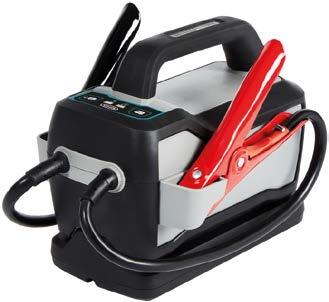
4 minute read
Volvo D5 timing belt: 12-step guide
Figure 1
VOLVO D5 TIMING BELT KIT
DAYCO’S TECHNICAL TEAM PROVIDE A 12-STEP GUIDE TO FITTING A TIMING BELT KIT TO VOLVO’S DIESEL VARIANTS
The 2.0 and 2.4-litre diesel D5 engines used by Volvo in almost every variant in the manufacture’s range, but notably in the popular XC60 and XC90 siblings, features a timing belt driven water pump. As replacing the belt also requires the auxiliary drive system to be removed, Dayco best practice recommends that all the system’s components, both primary and auxiliary drive, are replaced at the same time.
This step-by-step technical guide will help you through the process, avoiding complications and ensuring a first-rate, professional job. As with all primary drive system jobs, the work should be undertaken when the engine is cold – ideally, the vehicle will not have been run for at least four hours.
Step-by-step
1. Start by removing the engine cover, then the front right wheel and cowling to expose the two belts of the auxiliary drive system. Use the special slot to slacken off the belt tensioner (figure 1), remove the belt, followed by the five crankshaft pulley bolts. Then detach the ride height detector, remove the crankshaft pulley and then the tensioner.
2. From underneath, take off the engine shield, securely support the engine and remove the engine’s lower links.
Returning to the top, remove the cooling fluid reservoir, the upper engine support rod and mounting plate.

4. Using the central crankshaft pulley bolt, rotate the crankshaft so that the crankshaft and camshaft pulley timing references align, then loosen the timing belt tensioner and remove the belt, followed by the tensioner.
5. As the camshaft pulley is not fitted directly on the shaft and its holes are slotted, to ensure it is refitted in the correct position, mark its position with paint before removing it (figure 2). Once the camshaft pulley is detached, take off the idler and then the rear timing belt cover to allow the removal of the water pump.
6. After flushing out the cooling system to remove any debris, cover both sides of the gasket with a thin layer of sealant before carefully positioning it in relation to the two pins in the housing before fitting the new water pump from Dayco kit KTBWP5920.
7. Now is the ideal time to replace the alternator pulley, so remove the bolts securing the alternator and the water hose above it, to be able to turn the alternator in order to remove and replace the alternator pulley with Dayco ALP2409 and fit the protective cap. Refit the alternator and reattach the hose.

Figure 2
8. Refit the rear timing belt case and position the new belt tensioner from the kit, paying particular attention as its slot must be located in the corresponding lug on the engine (figure 3) and then fit the new idler and tighten its bolt to 25Nm.
9. Using the mark painted on earlier, refit the camshaft pulley, followed by the new Dayco timing belt, ensuring its correct direction of rotation and leaving the slack section facing the tensioner.
10. With an Allen key, first position the pointer slightly past the right hand flange of its slot, before moving it so it points at the lug (figure 4) and tighten the belt tensioner bolt to between 24 and 27Nm, dependant on the engine variant.

Figure 3
11. Turn the crankshaft through two rotations and check the engine timing remains correct. Providing it is, refit the crankshaft pulley, tightening its central bolt to 300Nm and four side bolts to 35Nm + 50°. Refit the remaining components in reverse order of their removal but check, and if necessary, replace the auxiliary belt tensioner with
Dayco APV2756. However, Dayco recommends that the auxiliary belts 5PK628EE (an elastic belt) and 5PK1121S are always replaced.

12. Finally, refill the cooling system, start the engine, check carefully for leaks, and ensure the radiator fan is operating correctly.
To view this installation, or any other Dayco technical video, visit www.daycoaftermarket.com and click on Dayco TV.
www.dayco.com
Take Charge

Keep your business moving with Ring’s Professional Lithium Jump Starter.
Compact yet powerful enough to jump start 8L Petrol engines or 6L Diesel engine vehicles Easy to handle being 75% lighter than equivalent lead acid jump starters Maximum safety and protection built in Always ready to go with rapid recharge and docking station during storage










